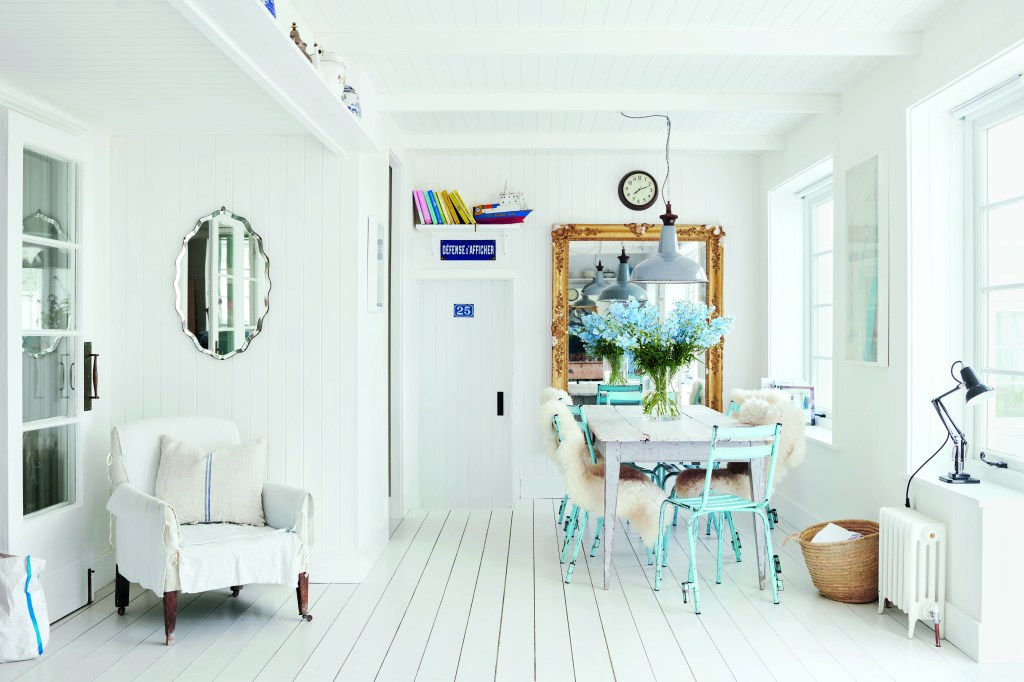I like spare interiors, and I like beautifully adorned rooms. I like crystal chandeliers and rustic tables, gilded mirrors and industrial light fixtures, and modern furniture alongside antiques.
And I like it all at the same time.
Which is why I was so happy to pore over a new book, “The Romantic Minimalist —Simple Homes with Soul” (Mitchell Beazley Publishers), by married design duo Atlanta Bartlett and Dave Coote. It’s an ideal companion for those of us who like their interiors both humble and luxurious, but aren’t sure how to pull that off.
I hopped on a Zoom call with Bartlett and Coote, speaking from their romantically minimal home near Dungeness on England’s south coast.
“We wrote this book,” Bartlett said, “because we found that many people don’t want to give up their pretty fabrics and pretty china. Yet they wonder whether they can have a pared-back, simple interior and still have vintage cushions and granny’s dishes.”
“We’ve been through the more is more era and through the really pared-back era with concrete floors and no curtains,” Coote said. “This book addresses how to find the synergy between the two.”
So how do you marry minimalism and romanticism in one look?
“First, understand that all furnishings look better when they have a foil, something that opposes or contrasts with them,” Bartlett said. “We are all a mad mass of contradictions. Our homes should reflect that, shiny and matte, rough with smooth.”
“We wanted to go beyond the lonely sofa in the monastic, empty room to achieve a softer, comfortable look that is still calm and a little Zen,” Coote said.
That’s the sweet spot all right. And the richly photographed, 244-page hardcover shows us how with looks that land at the four-way intersection of simplicity, authenticity, glamour and comfort. The book has chapters on light, color and ways to bring in nature, plus 10 case studies featuring homes applying their romantic-minimalist concepts.
“The emphasis lies in appreciating the imperfect, encouraging self-expression and never compromising on comfort,” the authors write in the introduction. Beyond that, Bartlett and Coote offer the following hallmarks of romantic minimalism:

Honest materials: Romantic minimalism celebrates the use of raw materials like hand-troweled plaster, natural wood, nubby linen, worn leather and any honest material that is not trying to pretend it’s something else.
Negative space: Featured objects gain importance, when they have lots of space around them, Bartlett said. “What lies in between objects, namely space, is as important as the objects themselves. That is the crux of serenity in design.”
Natural light: “We use natural daylight as a decorative element and view it as essential for mental and physical health,” she said. “It’s especially important to those of us who live in northern regions that have long spells of darkness.” Most of the interiors featured in their book have white-washed wood floors and white wood paneling, because the white reflects light so well.
















































